-
EXECUTIVE SUMMARY 15
-
GLOBAL IT ASSET MANAGEMENT SOFTWARE MARKET, BY COMPONENT 17
-
GLOBAL IT ASSET MANAGEMENT SOFTWARE MARKET, BY ORGANIZATION SIZE 18
-
GLOBAL IT ASSET MANAGEMENT SOFTWARE MARKET, BY END USER 19
-
GLOBAL IT ASSET MANAGEMENT SOFTWARE MARKET, BY DEPLOYMENT TYPE 20
-
GLOBAL IT ASSET MANAGEMENT SOFTWARE MARKET, BY TOOLS 21
-
GLOBAL IT ASSET MANAGEMENT SOFTWARE MARKET, BY REGION 22
-
MARKET INTRODUCTION 23
-
DEFINITION 23
-
SCOPE OF THE STUDY 23
-
MARKET STRUCTURE 23
-
RESEARCH METHODOLOGY 24
-
RESEARCH PROCESS 24
-
PRIMARY RESEARCH 25
-
SECONDARY RESEARCH 26
-
MARKET SIZE ESTIMATION 26
-
TOP DOWN & BOTTOM-UP APPROACH 27
-
FORECAST MODEL 28
-
LIST OF ASSUMPTIONS 29
-
MARKET DYNAMICS 30
-
DRIVERS 30
- INCREASING NEED FOR CENTRALIZATION AND AUTOMATION IN IT INFRASTRUCTURE 30
- GROWING FOCUS ON COST, COMPLIANCE, AND SECURITY RELATED TO ASSETS 31
- DRIVER IMPACT ANALYSIS 32
-
RESTRAINTS 32
- HIGH COSTS REQUIRED FOR DEPLOYMENT 32
- LACK OF SKILLED WORKFORCE AND POOR MANAGEMENT POSE A MAJOR CHALLENGE TO MARKET GROWTH 33
- RESTRAINT IMPACT ANALYSIS 33
-
OPPORTUNITIES 34
- RISING ADOPTION OF ON-CLOUD-BASED IT ASSET MANAGEMENT SOLUTIONS AND INTRODUCTION OF M2M AND IOT 34
-
MARKET FACTOR ANALYSIS 35
-
VALUE CHAIN ANALYSIS 35
- SOFTWARE DESIGNERS & DEVELOPERS 35
- SYSTEM INTEGRATORS 36
- END USER ASSEMBLY 36
-
PORTER’S FIVE FORCES MODEL 37
- THREAT OF NEW ENTRANTS 37
- BARGAINING POWER OF SUPPLIERS 38
- THREAT OF SUBSTITUTES 38
- BARGAINING POWER OF BUYERS 38
- INTENSITY OF RIVALRY 38
-
IMPACT OF COVID-19 39
- IMPACT ON DEMAND OF THE SOFTWARE ACROSS VARIOUS INDUSTRY VERTICAL 39
- IMPACT ON DEMAND OF THE SOFTWARE ACROSS VARIOUS INDUSTRY VERTICAL 39
- IMPACT ON DEMAND OF THE SOFTW ARE ACROSS REGIONS 40
-
GLOBAL IT ASSET MANAGEMENT SOFTWARE MARKET, BY COMPONENT 41
-
OVERVIEW 41
- GLOBAL IT ASSET MANAGEMENT SOFTWARE MARKET ESTIMATES & FORECAST, BY COMPONENT, 2018–2030 41
-
SOFTWARE 42
- SOFTWARE: MARKET ESTIMATES & FORECAST, BY REGION, 2018–2030 42
-
SERVICES 43
- SERVICES: MARKET ESTIMATES & FORECAST, BY REGION, 2018–2030 43
-
GLOBAL IT ASSET MANAGEMENT SOFTWARE MARKET, BY ORGANIZATION SIZE 44
-
OVERVIEW 44
- GLOBAL IT ASSET MANAGEMENT SOFTWARE MARKET ESTIMATES & FORECAST, BY ORGANIZATION SIZE, 2018–2030 44
-
SME 45
- SME: MARKET ESTIMATES & FORECAST, BY REGION, 2018–2030 45
-
LARGE ENTERPRISE 46
- LARGE ENTERPRISES: MARKET ESTIMATES & FORECAST, BY REGION, 2018–2030 46
-
GLOBAL IT ASSET MANAGEMENT SOFTWARE MARKET, BY DEPLOYMENT TYPE 47
-
OVERVIEW 47
- GLOBAL IT ASSET MANAGEMENT SOFTWARE MARKET ESTIMATES & FORECAST, BY DEPLOYMENT TYPE, 2018–2030 47
-
ON-CLOUD 48
- ON-CLOUD: MARKET ESTIMATES & FORECAST, BY REGION, 2018–2030 48
-
ON-PREMISES 49
- ON-PREMISES: MARKET ESTIMATES & FORECAST, BY REGION, 2018–2030 49
-
GLOBAL IT ASSET MANAGEMENT SOFTWARE MARKET, BY END USER 50
-
OVERVIEW 50
- GLOBAL IT ASSET MANAGEMENT SOFTWARE MARKET ESTIMATES & FORECAST, BY END USER, 2018–2030 50
-
BANKING & FINANCIAL SERVICE 51
- BANKING AND FINANCIAL SERVICE: MARKET ESTIMATES & FORECAST, BY REGION, 2018–2030 51
-
RETAIL 51
- RETAIL: MARKET ESTIMATES & FORECAST, BY REGION, 2018–2030 51
-
AEROSPACE & DEFENSE 52
- AEROSPACE & DEFENSE: MARKET ESTIMATES & FORECAST, BY REGION, 2018–2030 52
-
IT & TELECOM 52
- IT & TELECOM: MARKET ESTIMATES & FORECAST, BY REGION, 2018–2030 52
-
ENERGY & POWER 53
- ENERGY & POWER: MARKET ESTIMATES & FORECAST, BY REGION, 2018–2030 53
-
AUTOMOTIVE & TRANSPORTATION 54
- AUTOMOTIVE & TRANSPORTATION: MARKET ESTIMATES & FORECAST, BY REGION, 2018–2030 54
-
OTHERS 54
- OTHERS: MARKET ESTIMATES & FORECAST, BY REGION, 2018–2030 54
-
GLOBAL IT ASSET MANAGEMENT SOFTWARE MARKET, BY TOOLS 55
-
OVERVIEW 55
- GLOBAL IT ASSET MANAGEMENT SOFTWARE MARKET ESTIMATES & FORECAST, BY TOOLS, 2018–2030 55
-
DISCOVERY/ AUTOMATED INVENTORY 56
- DISCOVERY/ AUTOMATED INVENTORY: MARKET ESTIMATES & FORECAST, BY REGION, 2018–2030 56
-
LICENSE MANAGEMENT 57
- LICENSE MANAGEMENT: MARKET ESTIMATES & FORECAST, BY REGION, 2018–2030 57
-
PATCH & VERSION MANAGEMENT 57
- PATCH & VERSION MANAGEMENT: MARKET ESTIMATES & FORECAST, BY REGION, 2018–2030 58
-
REQUEST MANAGEMENT 58
- REQUEST MANAGEMENT: MARKET ESTIMATES & FORECAST, BY REGION, 2018–2030 58
-
PRODUCT/SERVICE CATALOG 59
- PRODUCT/SERVICE CATALOG: MARKET ESTIMATES & FORECAST, BY REGION, 2018–2030 59
-
DIGITAL ASSET MANAGEMENT 60
- DIGITAL ASSET MANAGEMENT: MARKET ESTIMATES & FORECAST, BY REGION, 2018–2030 60
-
OTHERS 61
- OTHERS: MARKET ESTIMATES & FORECAST, BY REGION, 2018–2030 61
-
GLOBAL IT ASSET MANAGEMENT SOFTWARE, BY REGION 62
-
OVERVIEW 62
- GLOBAL IT ASSET MANAGEMENT SOFTWARE MARKET ESTIMATES & FORECAST, BY REGION, 2018–2030 62
-
NORTH AMERICA 63
- NORTH AMERICA IT ASSET MANAGEMENT SOFTWARE MARKET ESTIMATES & FORECAST, BY COUNTRY, 2018–2030 64
- US 66
- CANADA 69
- MEXICO 71
-
EUROPE 73
- EUROPE IT ASSET MANAGEMENT SOFTWARE MARKET ESTIMATES & FORECAST, BY COUNTRY, 2018–2030 74
- GERMANY 76
- UK 78
- FRANCE 80
- REST OF EUROPE 82
-
ASIA-PACIFIC 85
- ASIA-PACIFIC IT ASSET MANAGEMENT SOFTWARE MARKET ESTIMATES & FORECAST, BY COUNTRY, 2018–2030 86
- CHINA 88
- INDIA 90
- JAPAN 92
- REST OF ASIA-PACIFIC 94
-
REST OF THE WORLD 96
- REST OF THE WORLD IT ASSET MANAGEMENT SOFTWARE MARKET ESTIMATES & FORECAST, BY REGION, 2018–2030 96
-
COMPANY PROFILES 99
-
FRESHWORKS INC. 99
- COMPANY OVERVIEW 99
- FINANCIAL OVERVIEW 99
- PRODUCTS OFFERED 100
- KEY DEVELOPMENTS 100
- KEY STRATEGIES 100
-
BMC SOFTWARE 101
- COMPANY OVERVIEW 101
- FINANCIAL OVERVIEW 102
- PRODUCTS OFFERED 102
- KEY DEVELOPMENTS 102
- SWOT ANALYSIS 103
- KEY STRATEGIES 103
-
SYSAID TECHNOLOGIES LTD 104
- COMPANY OVERVIEW 104
- FINANCIAL OVERVIEW 104
- PRODUCTS OFFERED 104
- KEY DEVELOPMENTS 104
-
SERVICENOW, INC 105
- COMPANY OVERVIEW 105
- FINANCIAL OVERVIEW 105
- PRODUCTS OFFERED 106
- KEY DEVELOPMENTS 106
- SWOT ANALYSIS 106
- KEY STRATEGIES 107
-
ASSET PANDA LLC 108
- COMPANY OVERVIEW 108
- FINANCIAL OVERVIEW 108
- PRODUCTS OFFERED 108
- KEY DEVELOPMENTS 108
-
SAMANAGE LTD 109
- COMPANY OVERVIEW 109
- FINANCIAL OVERVIEW 109
- PRODUCTS OFFERED 109
- KEY DEVELOPMENTS 109
-
MICROSOFT CORPORATION 110
- COMPANY OVERVIEW 110
- FINANCIAL OVERVIEW 110
- PRODUCTS OFFERED 111
- KEY DEVELOPMENTS 111
- SWOT ANALYSIS 111
- KEY STRATEGIES 112
-
FLEXERA SOFTWARE LLC 113
- COMPANY OVERVIEW 113
- FINANCIAL OVERVIEW 113
- PRODUCTS OFFERED 113
- KEY DEVELOPMENTS 113
- SWOT ANALYSIS 114
- KEY STRATEGIES 114
-
IBM CORPORATION 115
- COMPANY OVERVIEW 115
- FINANCIAL OVERVIEW 115
- PRODUCTS OFFERED 116
- KEY DEVELOPMENTS 116
- SWOT ANALYSIS 117
- KEY STRATEGIES 117
-
HP INC 118
- COMPANY OVERVIEW 118
- FINANCIAL OVERVIEW 118
- PRODUCTS OFFERED 119
- KEY DEVELOPMENTS 119
- SWOT ANALYSIS 119
- KEY STRATEGIES 120
-
-
LIST OF TABLES
-
LIST OF ASSUMPTIONS 29
-
GLOBAL IT ASSET MANAGEMENT SOFTWARE MARKET ESTIMATES & FORECAST, BY COMPONENT, 2018–2030 (USD MILLION) 41
-
SOFTWARE: MARKET ESTIMATES & FORECAST, BY REGION, 2018–2030 (USD MILLION) 42
-
SERVICES: MARKET ESTIMATES & FORECAST, BY REGION, 2018–2030 (USD MILLION) 43
-
GLOBAL IT ASSET MANAGEMENT SOFTWARE MARKET ESTIMATES & FORECAST, BY ORGANIZATION SIZE, 2018–2030 (USD MILLION) 44
-
SME: MARKET ESTIMATES & FORECAST, BY REGION, 2018–2030 (USD MILLION) 45
-
LARGE ENTERPRISES: MARKET ESTIMATES & FORECAST, BY REGION, 2018–2030 (USD MILLION) 46
-
GLOBAL IT ASSET MANAGEMENT SOFTWARE MARKET ESTIMATES & FORECAST, BY DEPLOYMENT TYPE, 2018–2030 (USD MILLION) 47
-
ON-CLOUD: MARKET ESTIMATES & FORECAST, BY REGION, 2018–2030 (USD MILLION) 48
-
ON-PREMISES: MARKET ESTIMATES & FORECAST, BY REGION, 2018–2030 (USD MILLION) 49
-
GLOBAL IT ASSET MANAGEMENT SOFTWARE MARKET ESTIMATES & FORECAST, BY END USER, 2018–2030 (USD MILLION) 50
-
BANKING AND FINANCIAL SERVICE: MARKET ESTIMATES & FORECAST, BY REGION, 2018–2030 (USD MILLION) 51
-
RETAIL: MARKET ESTIMATES & FORECAST, BY REGION, 2018–2030 (USD MILLION) 51
-
AEROSPACE & DEFENSE: MARKET ESTIMATES & FORECAST, BY REGION, 2018–2030 (USD MILLION) 52
-
IT & TELECOM: MARKET ESTIMATES & FORECAST, BY REGION, 2018–2030 (USD MILLION) 52
-
ENERGY & POWER: MARKET ESTIMATES & FORECAST, BY REGION, 2018–2030 (USD MILLION) 53
-
AUTOMOTIVE & TRANSPORTATION: MARKET ESTIMATES & FORECAST, BY REGION, 2018–2030 (USD MILLION) 54
-
OTHERS: MARKET ESTIMATES & FORECAST, BY REGION, 2018–2030 (USD MILLION) 54
-
GLOBAL IT ASSET MANAGEMENT SOFTWARE MARKET ESTIMATES & FORECAST, BY TOOLS, 2018–2030 (USD MILLION) 55
-
DISCOVERY/ AUTOMATED INVENTORY: MARKET ESTIMATES & FORECAST, BY REGION, 2018–2030 (USD MILLION) 56
-
LICENSE MANAGEMENT: MARKET ESTIMATES & FORECAST, BY REGION, 2018–2030 (USD MILLION) 57
-
PATCH & VERSION MANAGEMENT: MARKET ESTIMATES & FORECAST, BY REGION, 2018–2030 (USD MILLION) 58
-
REQUEST MANAGEMENT: MARKET ESTIMATES & FORECAST, BY REGION, 2018–2030 (USD MILLION) 58
-
PRODUCT/SERVICE CATALOG: MARKET ESTIMATES & FORECAST, BY REGION, 2018–2030 (USD MILLION) 59
-
DIGITAL ASSET MANAGEMENT: MARKET ESTIMATES & FORECAST, BY REGION, 2018–2030 (USD MILLION) 60
-
OTHERS: MARKET ESTIMATES & FORECAST, BY REGION, 2018–2030 (USD MILLION) 61
-
GLOBAL IT ASSET MANAGEMENT SOFTWARE MARKET ESTIMATES & FORECAST, BY REGION, 2018–2030 (USD MILLION) 62
-
NORTH AMERICA: MARKET ESTIMATES & FORECAST, BY COUNTRY, 2018–2030 (USD MILLION) 64
-
NORTH AMERICA: MARKET ESTIMATES, BY COMPONENT, 2018–2030 (USD MILLION) 64
-
NORTH AMERICA: MARKET ESTIMATES, BY ORGANIZATION SIZE, 2018–2030 (USD MILLION) 64
-
NORTH AMERICA: MARKET ESTIMATES, BY DEPLOYMENT TYPE, 2018–2030 (USD MILLION) 65
-
NORTH AMERICA: MARKET ESTIMATES, BY END USER, 2018–2030 (USD MILLION) 65
-
NORTH AMERICA: MARKET ESTIMATES, BY TOOLS, 2018–2030 (USD MILLION) 66
-
US: MARKET ESTIMATES, BY COMPONENT, 2018–2030 (USD MILLION) 66
-
US: MARKET ESTIMATES, BY ORGANIZATION SIZE, 2018–2030 (USD MILLION) 67
-
US: MARKET ESTIMATES, BY DEPLOYMENT TYPE, 2018–2030 (USD MILLION) 67
-
US: MARKET ESTIMATES, BY END USER, 2018–2030 (USD MILLION) 67
-
US: MARKET ESTIMATES, BY TOOLS, 2018–2030 (USD MILLION) 68
-
CANADA: MARKET ESTIMATES, BY COMPONENT, 2018–2030 (USD MILLION) 69
-
CANADA: MARKET ESTIMATES, BY ORGANIZATION SIZE, 2018–2030 (USD MILLION) 69
-
CANADA: MARKET ESTIMATES, BY DEPLOYMENT TYPE, 2018–2030 (USD MILLION) 69
-
CANADA: MARKET ESTIMATES, BY END USER, 2018–2030 (USD MILLION) 70
-
CANADA: MARKET ESTIMATES, BY END USER, 2018–2030 (USD MILLION) 70
-
MEXICO: MARKET ESTIMATES, BY COMPONENT, 2018–2030 (USD MILLION) 71
-
MEXICO: MARKET ESTIMATES, BY ORGANIZATION SIZE, 2018–2030 (USD MILLION) 71
-
MEXICO: MARKET ESTIMATES, BY DEPLOYMENT TYPE, 2018–2030 (USD MILLION) 71
-
MEXICO: MARKET ESTIMATES, BY END USER, 2018–2030 (USD MILLION) 72
-
MEXICO: MARKET ESTIMATES, BY END USER, 2018–2030 (USD MILLION) 72
-
EUROPE: MARKET ESTIMATES & FORECAST, BY COUNTRY, 2018–2030 (USD MILLION) 74
-
EUROPE: MARKET ESTIMATES, BY COMPONENT, 2018–2030 (USD MILLION) 74
-
EUROPE: MARKET ESTIMATES, BY ORGANIZATION SIZE, 2018–2030 (USD MILLION) 74
-
EUROPE: MARKET ESTIMATES, BY DEPLOYMENT TYPE, 2018–2030 (USD MILLION) 75
-
EUROPE: MARKET ESTIMATES, BY END USER, 2018–2030 (USD MILLION) 75
-
EUROPE: MARKET ESTIMATES, BY END USER, 2018–2030 (USD MILLION) 76
-
GERMANY: MARKET ESTIMATES, BY COMPONENT, 2018–2030 (USD MILLION) 76
-
GERMANY: MARKET ESTIMATES, BY ORGANIZATION SIZE, 2018–2030 (USD MILLION) 77
-
GERMANY: MARKET ESTIMATES, BY DEPLOYMENT TYPE, 2018–2030 (USD MILLION) 77
-
GERMANY: MARKET ESTIMATES, BY END USER, 2018–2030 (USD MILLION) 77
-
GERMANY: MARKET ESTIMATES, BY END USER, 2018–2030 (USD MILLION) 78
-
UK: MARKET ESTIMATES, BY COMPONENT, 2018–2030 (USD MILLION) 78
-
UK: MARKET ESTIMATES, BY ORGANIZATION SIZE, 2018–2030 (USD MILLION) 79
-
UK: MARKET ESTIMATES, BY DEPLOYMENT TYPE, 2018–2030 (USD MILLION) 79
-
UK: MARKET ESTIMATES, BY END USER, 2018–2030 (USD MILLION) 79
-
UK: MARKET ESTIMATES, BY END USER, 2018–2030 (USD MILLION) 80
-
FRANCE: MARKET ESTIMATES, BY COMPONENT, 2018–2030 (USD MILLION) 80
-
FRANCE: MARKET ESTIMATES, BY ORGANIZATION SIZE, 2018–2030 (USD MILLION) 81
-
FRANCE: MARKET ESTIMATES, BY DEPLOYMENT TYPE, 2018–2030 (USD MILLION) 81
-
FRANCE: MARKET ESTIMATES, BY END USER, 2018–2030 (USD MILLION) 81
-
FRANCE: MARKET ESTIMATES, BY END USER, 2018–2030 (USD MILLION) 82
-
REST OF EUROPE: MARKET ESTIMATES, BY COMPONENT, 2018–2030 (USD MILLION) 82
-
REST OF EUROPE: MARKET ESTIMATES, BY ORGANIZATION SIZE, 2018–2030 (USD MILLION) 83
-
REST OF EUROPE: MARKET ESTIMATES, BY DEPLOYMENT TYPE, 2018–2030 (USD MILLION) 83
-
REST OF EUROPE: MARKET ESTIMATES, BY END USER, 2018–2030 (USD MILLION) 83
-
REST
-
'



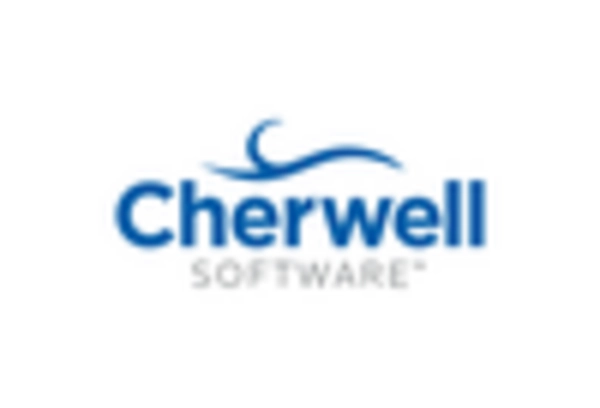
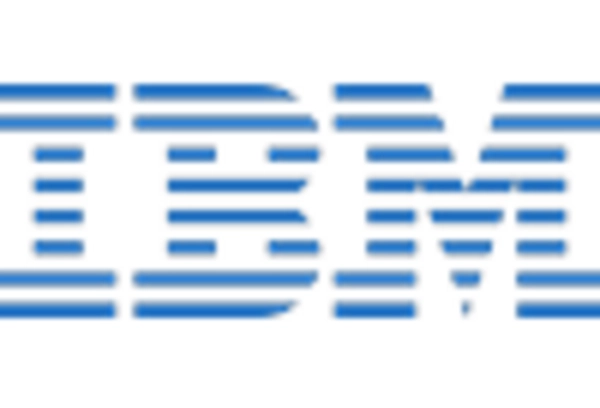
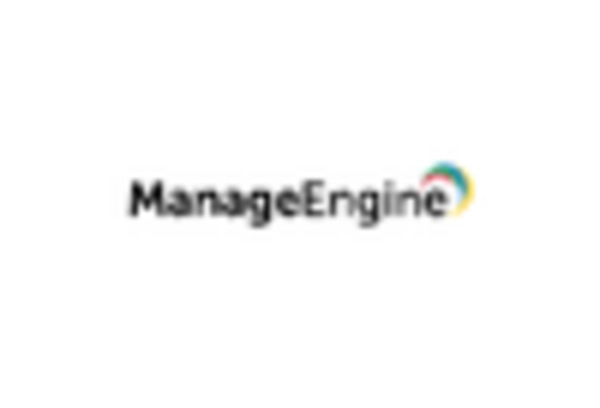
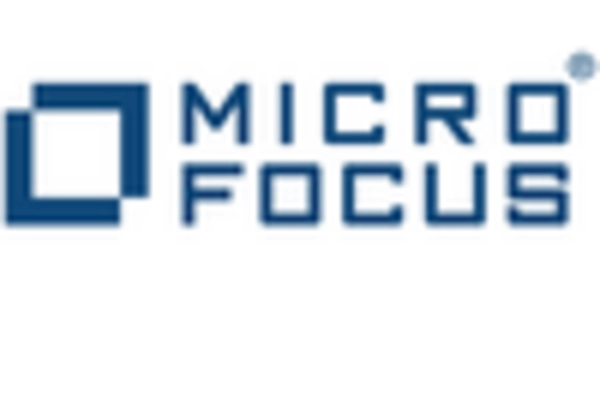
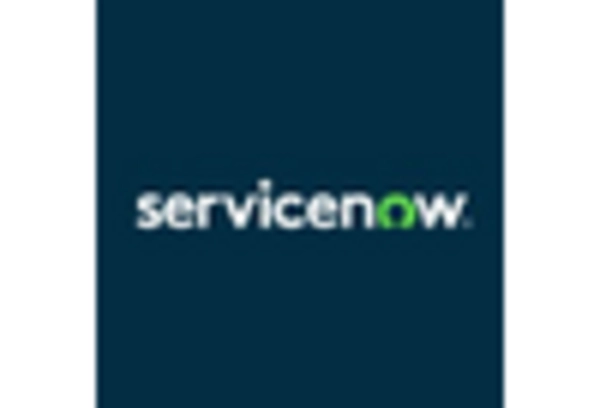









Leave a Comment